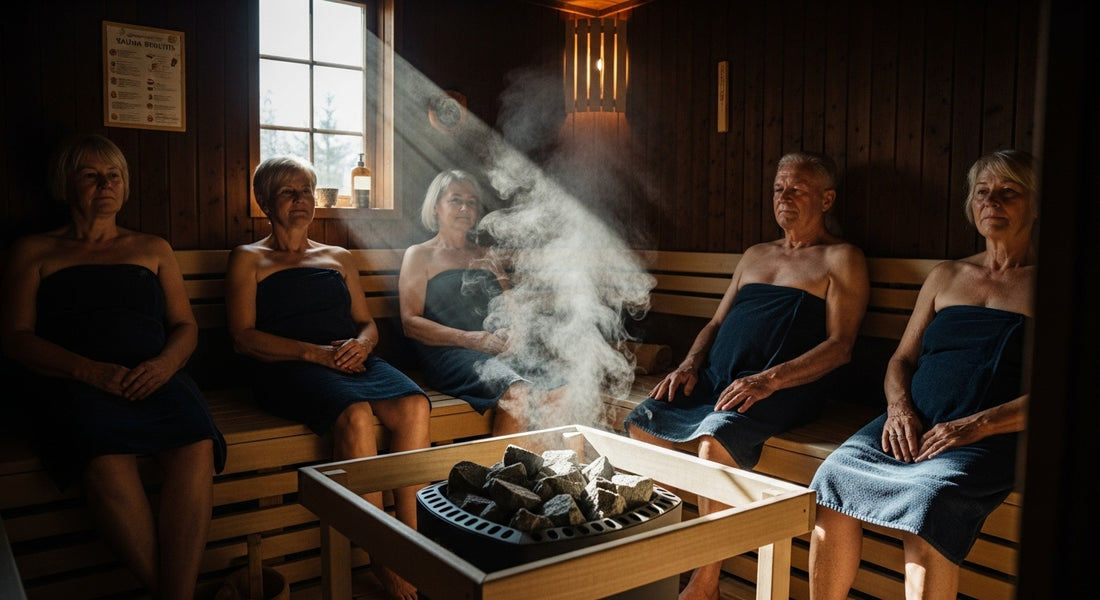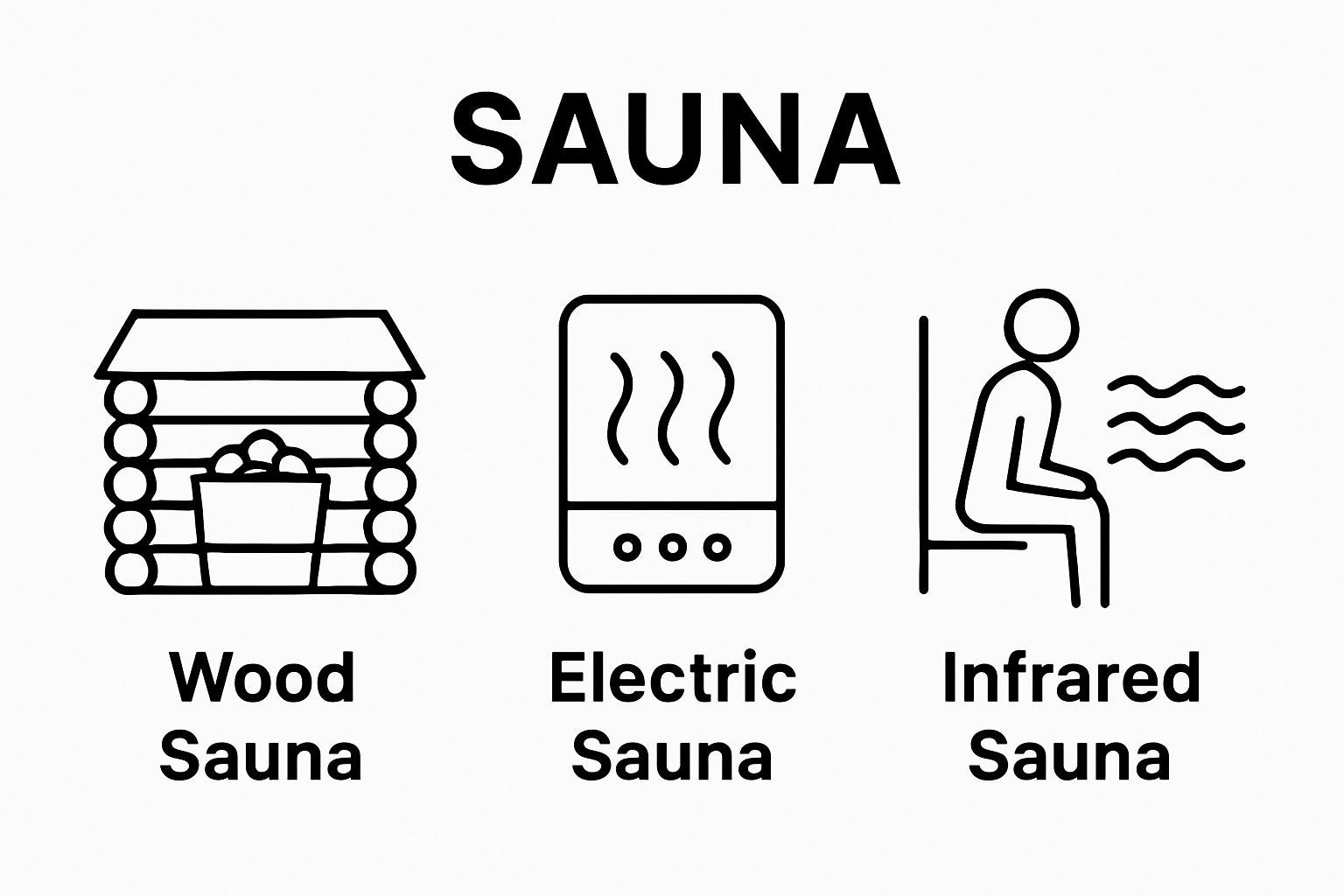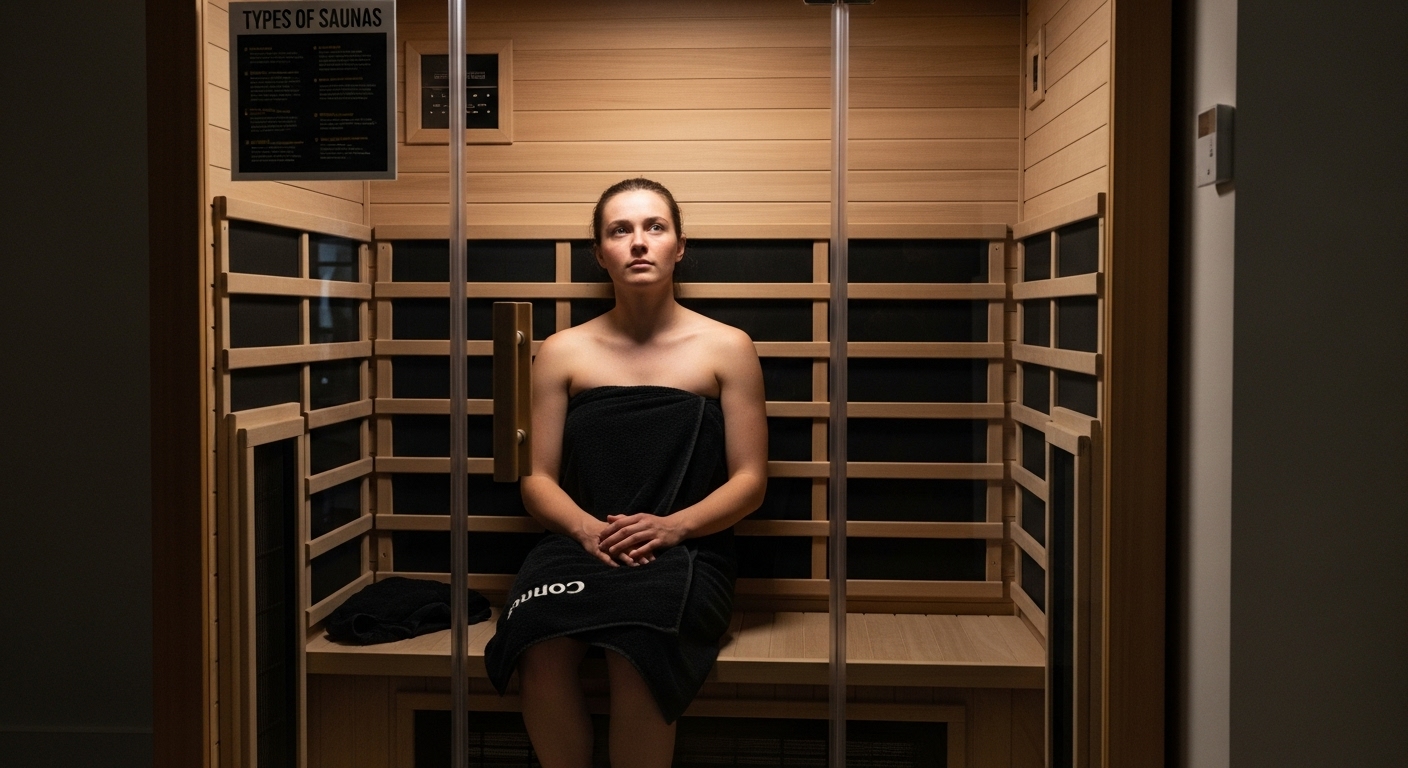
What is a Sauna? Understanding Its Benefits and Function
Saunas are often seen as just hot rooms for relaxation, but the science goes much deeper. Think about this. Regular sauna use can mimic the effects of moderate cardiovascular exercise, raising your heart rate and improving circulation without ever lifting a weight. Sounds like magic for your health, right? Turns out, saunas are more than a wellness trend—they are rooted in centuries of cultural tradition and backed by research showing real benefits for both body and mind.
Table of Contents
- Defining What A Sauna Is
- The Importance Of Saunas In Health And Wellness
- How A Sauna Works: The Science Of Heat And Relaxation
- Types Of Saunas: Exploring Different Options
- Key Benefits Of Using A Sauna Regularly
Quick Summary
| Takeaway | Explanation |
|---|---|
| Saunas enhance cardiovascular health. | Regular sauna sessions improve circulation and lower blood pressure, mimicking the effects of moderate exercise on heart health. |
| Sauna use boosts mental well-being. | The heat exposure in saunas promotes endorphin release, helping to reduce stress and enhance mood regulation. |
| Various sauna types cater to preferences. | Traditional and modern saunas offer different benefits, allowing users to select based on their wellness goals and comfort levels. |
| Frequent sauna use aids metabolism. | The heat from saunas accelerates metabolic processes, supporting weight management and cellular detoxification efforts. |
| Saunas promote relaxation and recovery. | The warm environment of a sauna alleviates muscle tension and promotes overall relaxation for physical recovery and mental clarity. |
Defining What a Sauna Is
A sauna represents a specialized heated space designed for therapeutic relaxation and wellness experiences. According to medical research, a sauna traditionally involves creating an environment with temperatures ranging between 70°C and 100°C (158°F to 212°F), utilizing dry heat with potential steam elements.
The Origins and Cultural Significance
Saunas originated in Finland, where they represented more than just a heating room. They were fundamental social and cultural spaces where communities gathered, discussions happened, and personal hygiene was maintained. The Finnish people integrated saunas deeply into their lifestyle, viewing them not merely as temperature-controlled rooms but as holistic wellness environments.
Traditionally, saunas were constructed using wood, with heated stones playing a crucial role in generating warmth. These stones would be heated using wood-burning stoves, creating a dry heat environment that could be modulated by sprinkling water, which would produce steam and increase humidity.
Types of Sauna Experiences
Modern saunas have evolved beyond their traditional roots, offering diverse experiences to suit different preferences. Traditional Finnish saunas remain closest to the original design, featuring wood-lined interiors and wood-burning heaters. Infrared saunas represent a technological advancement, using light waves to generate heat directly within the body, operating at lower temperatures compared to traditional models.
Key characteristics of saunas include:
- Controlled high-temperature environments
- Ability to induce sweating
- Potential health and relaxation benefits
- Varied heating mechanisms
Whether you seek stress relief, muscle recovery, or cultural immersion, saunas offer a unique wellness experience that transcends simple heat exposure, connecting body, mind, and ancient traditions of personal care.
The Importance of Saunas in Health and Wellness
Saunas offer far more than a simple relaxation experience. Research from medical experts demonstrates that regular sauna use provides substantial physical and mental health benefits, transforming these heated spaces from luxury amenities into powerful wellness tools.
Physiological Benefits of Sauna Use
When exposed to intense heat, the human body undergoes remarkable physiological responses. The cardiovascular system experiences significant stimulation during sauna sessions, with heart rate increasing similar to moderate cardiovascular exercise. Blood vessels dilate, improving circulation and potentially reducing blood pressure. This thermal stress triggers a controlled response that strengthens the body’s adaptive mechanisms.
Key physiological responses include:
- Increased heart rate and improved cardiovascular performance
- Enhanced metabolic function
- Activation of heat shock proteins that support cellular repair
- Stimulation of the immune system
Mental Health and Stress Reduction
Beyond physical benefits, saunas provide profound mental wellness advantages. The combination of heat, isolation, and relaxation creates an environment conducive to stress reduction. Heat exposure stimulates the production of endorphins, the body’s natural mood elevators, which can help combat anxiety and promote a sense of emotional well-being.
Potential mental health benefits encompass:
- Reduction in stress and anxiety levels
- Improved sleep quality
- Enhanced mood regulation
- Increased mental clarity and relaxation
The holistic impact of sauna use extends beyond immediate sensations, offering a comprehensive approach to personal wellness that integrates physical recovery, mental rejuvenation, and long-term health optimization.
How a Sauna Works: The Science of Heat and Relaxation
Heat is the fundamental mechanism driving sauna wellness experiences. Scientific research reveals that saunas create a controlled thermal environment triggering complex physiological responses within the human body.
Thermal Dynamics and Body Response
When individuals enter a sauna, their skin temperature rapidly rises, typically between 40°C to 42°C. This sudden heat exposure initiates a series of intricate biological adaptations. Blood vessels begin to dilate, increasing circulation and pushing blood toward the skin’s surface. The body’s natural cooling mechanism activates, resulting in profuse sweating designed to regulate internal temperature.
Key thermal response mechanisms include:
- Rapid cardiovascular system activation
- Enhanced blood flow and circulation
- Increased metabolic rate
- Stimulation of sweat glands
Neurological and Hormonal Interactions
Beyond physical responses, sauna heat profoundly influences neurological systems. The hypothalamus interprets elevated temperatures as a form of controlled stress, triggering the release of endorphins and other stress-response hormones. This neurochemical cascade contributes to feelings of relaxation, reduced anxiety, and improved mood regulation.
The body experiences a complex interplay of:
- Endorphin release
- Cortisol level modulation
- Parasympathetic nervous system activation
- Improved neurological plasticity
Through these sophisticated physiological mechanisms, saunas transform simple heat exposure into a comprehensive wellness experience that supports both physical recovery and mental rejuvenation.
The following table outlines the main physiological and mental health benefits of regular sauna use as described in the article for quick reference.
| Benefit Category | Key Benefits | Description |
|---|---|---|
| Cardiovascular Health | Improved circulation, lower blood pressure | Sauna use mimics moderate exercise and enhances heart health |
| Mental Well-Being | Stress reduction, mood enhancement, endorphin release | Heat exposure promotes relaxation and mental clarity |
| Metabolic Function | Accelerated metabolism, detoxification | Increases sweating, boosts metabolism, aids weight management |
| Immune System | Enhanced immune response | Thermal stress stimulates immune function |
| Muscle Recovery | Reduced muscle tension | Heat relieves soreness and promotes physical recovery |
Types of Saunas: Exploring Different Options
Saunas are not a one-size-fits-all wellness experience, but rather a diverse range of thermal environments designed to suit different preferences and health goals. Research from wellness experts highlights the unique characteristics of various sauna types.
Traditional Sauna Variations
Traditional saunas represent the foundational approach to heat therapy, with distinct heating mechanisms that determine their unique characteristics. Wood-burning saunas epitomize the original Finnish design, using wooden stoves to heat stones and create intense dry heat. Electric saunas provide a more modern alternative, offering precise temperature control and easier installation in home settings.
Key traditional sauna characteristics include:
- Direct heat generation through stones
- High temperature ranges (70°C to 100°C)
- Ability to control humidity by adding water to heated stones
- Authentic cultural experience
Modern Sauna Technologies
Infrared saunas represent a technological revolution in heat therapy. Unlike traditional models, these saunas use electromagnetic waves to directly heat the body, operating at lower ambient temperatures. This approach allows for deeper tissue penetration while maintaining a more comfortable environmental temperature.
Significant modern sauna variations include:

- Infrared saunas with targeted light wave heating
- Portable personal saunas
- Full-spectrum infrared technology
- Smart saunas with digital temperature and humidity controls
Each sauna type offers a unique approach to wellness, demonstrating that heat therapy can be personalized to individual preferences, health objectives, and spatial constraints.
To help you compare the primary types of saunas outlined in this article, the following table summarizes their key characteristics, heating methods, and typical temperature ranges.
| Sauna Type | Heating Method | Typical Temperature Range | Key Features |
|---|---|---|---|
| Traditional Finnish | Wood-burning stove | 158°F - 212°F (70°C-100°C) | Wood-lined, stone-heated, modifiable humidity |
| Electric Sauna | Electric heater | 158°F - 212°F (70°C-100°C) | Precise temperature control, easy installation |
| Infrared Sauna | Infrared light waves | 120°F - 140°F (49°C-60°C) | Direct body heating, lower ambient temperature |
| Portable Sauna | Electric/Infrared | Varies | Mobile, compact, often infrared or low-powered electric |
| Smart Sauna | Digital/electric/infrared | Varies | App/digital controls, customizable humidity/temperature |

Key Benefits of Using a Sauna Regularly
Regular sauna use transcends mere relaxation, offering comprehensive health advantages that impact physical and mental well-being. Researchers have documented multiple significant benefits associated with consistent thermal therapy.
Cardiovascular Health Improvements
Frequent sauna sessions create remarkable cardiovascular adaptations. The intense heat environment stimulates blood vessel dilation, enhancing circulation and reducing cardiovascular strain. This controlled thermal stress acts similarly to moderate exercise, promoting heart health without significant physical exertion. Blood pressure regulation, improved arterial flexibility, and reduced risk of heart-related conditions emerge as substantial long-term benefits.
Cardiovascular advantages include:
- Enhanced blood circulation
- Reduced risk of hypertension
- Improved heart rate variability
- Potential reduction in cardiovascular disease risk
Metabolic and Physiological Benefits
Beyond cardiovascular improvements, regular sauna use supports comprehensive metabolic function. The body’s thermal stress response triggers metabolic acceleration, potentially supporting weight management and cellular repair mechanisms. Heat exposure stimulates protein production, activates cellular defense systems, and promotes detoxification through increased sweating.
Key metabolic and physiological benefits encompass:
- Accelerated metabolic rate
- Enhanced immune system function
- Improved skin health and detoxification
- Potential reduction in inflammation markers
Through consistent engagement, saunas transform from simple heat experiences into powerful wellness interventions, offering holistic health optimization across multiple physiological systems.
Transform Your Wellness Routine With Best Life Sauna
Have you realized how stress, poor circulation, and lack of quality self-care can drain your energy? This article explains how regular sauna use improves heart health, mental clarity, and overall recovery. Too often, people know these benefits but struggle to find the right solution to integrate authentic sauna therapy into their homes. At Best Life Sauna, we offer a diverse collection of premium saunas, from traditional wood-burning rooms to state-of-the-art infrared models, making it simple to start your own wellness journey.

Start building healthy habits today and enjoy the lasting effects of relaxation and recovery. Explore our featured sauna collection for tailored solutions that support your unique needs. Take advantage of free shipping on orders over $200 and our price match guarantee. Visit Best Life Sauna now to see how easy it is to create a rejuvenating space in your own home. Your path to better wellness begins with one click.
Frequently Asked Questions
What are the different types of saunas?
Saunas come in various types, including traditional Finnish saunas, which use wood-burning stoves to heat stones, and infrared saunas, which utilize light waves to heat the body directly at lower temperatures.
What are the health benefits of using a sauna?
Regular sauna use offers numerous health benefits, such as improved cardiovascular health, enhanced metabolic function, stress reduction, increased relaxation, and enhanced immune system performance.
How does a sauna work to provide health benefits?
A sauna creates a controlled high-temperature environment that causes the body to sweat, increases heart rate, improves circulation, and stimulates the release of endorphins, promoting physical and mental wellness.
How often should you use a sauna for optimal benefits?
For optimal benefits, it is generally recommended to use a sauna 2-3 times per week, but individual preferences and health conditions may influence the frequency of use.

